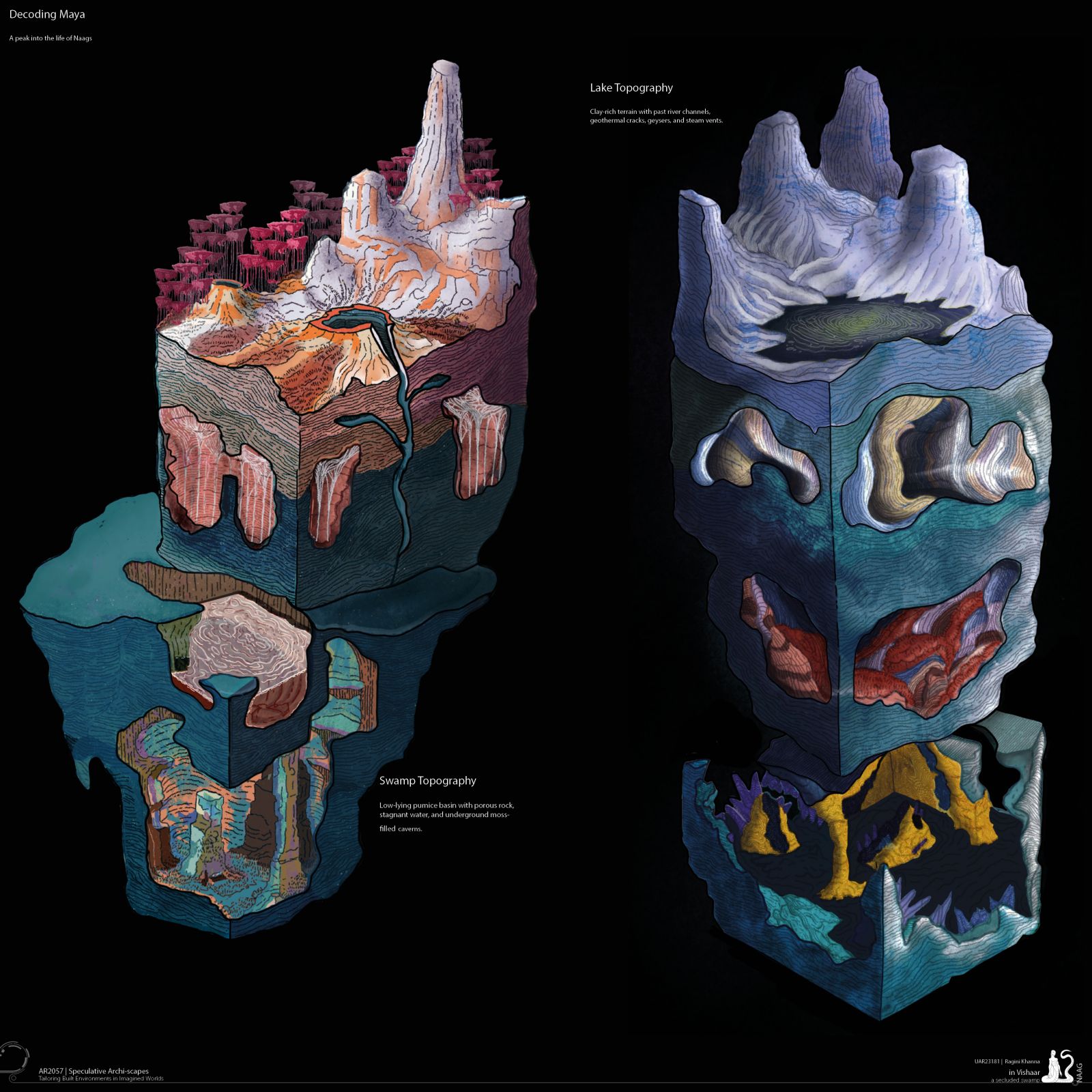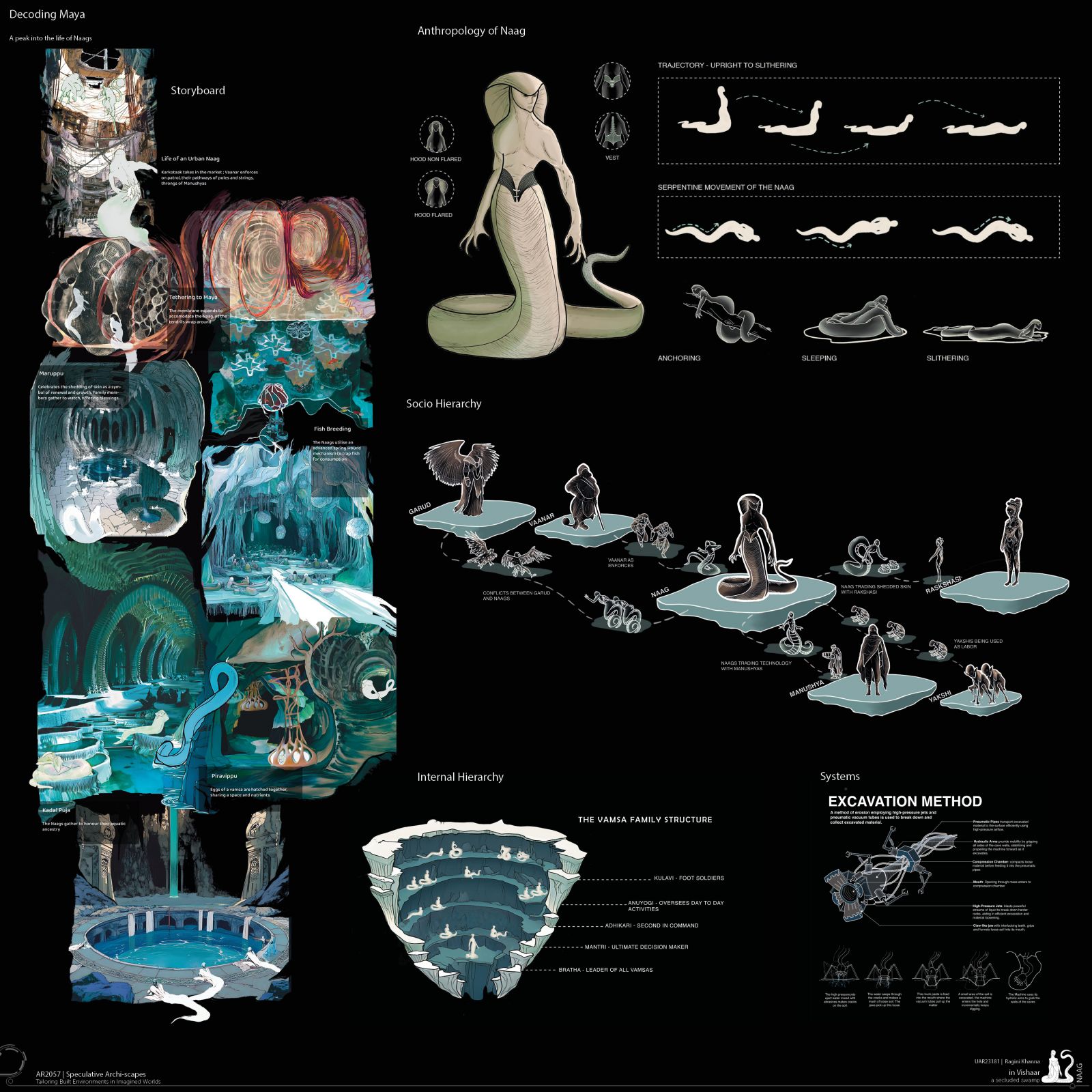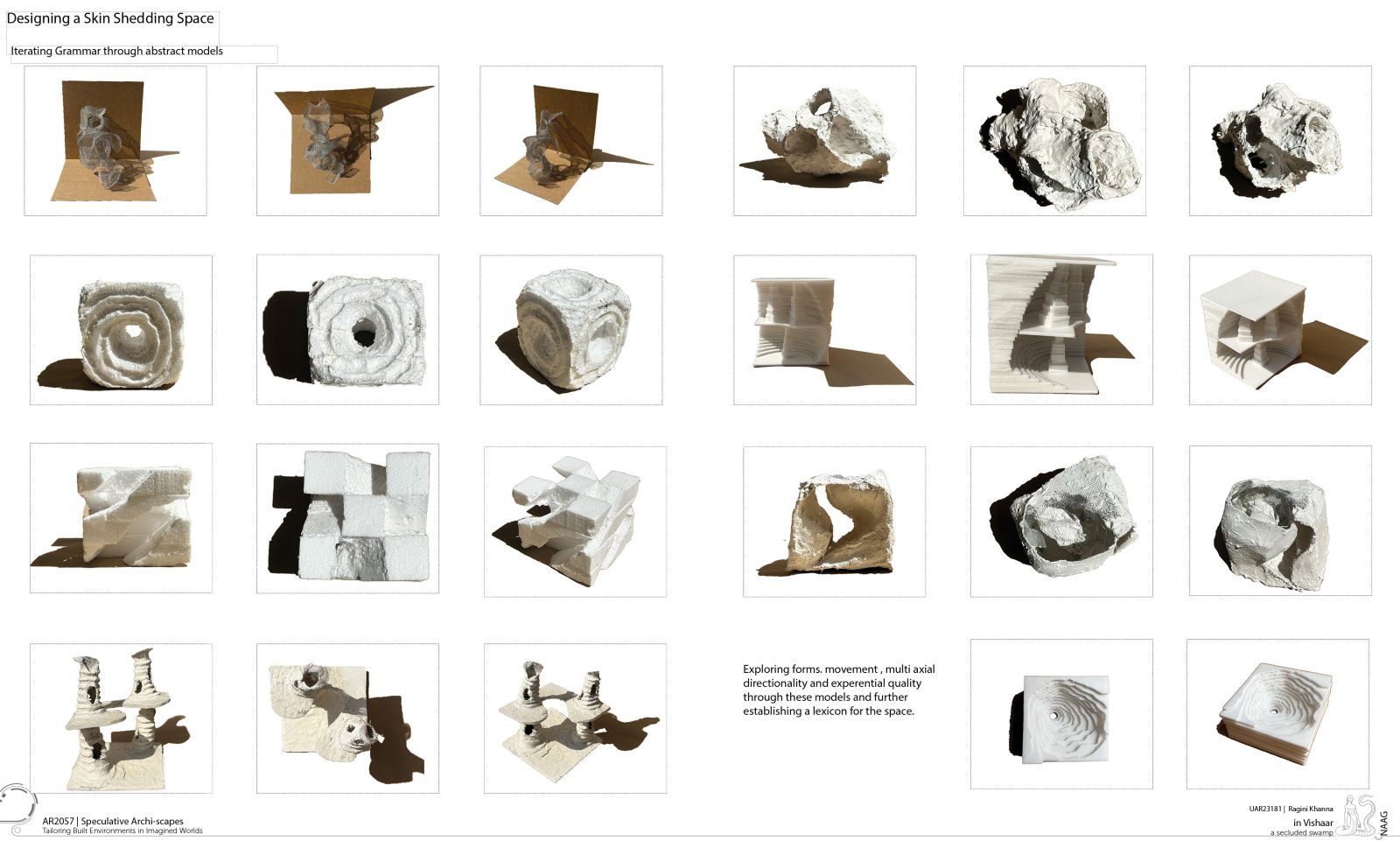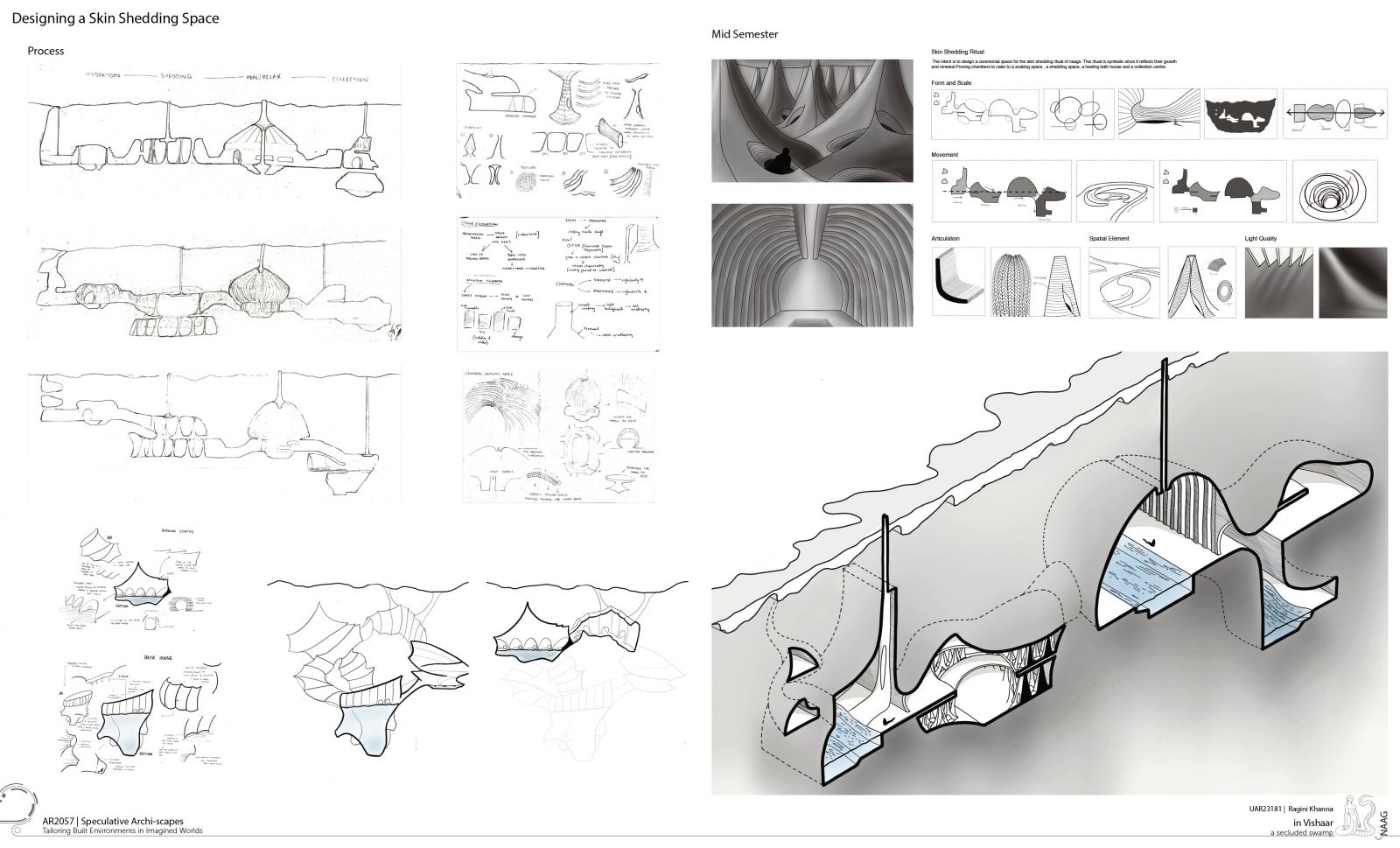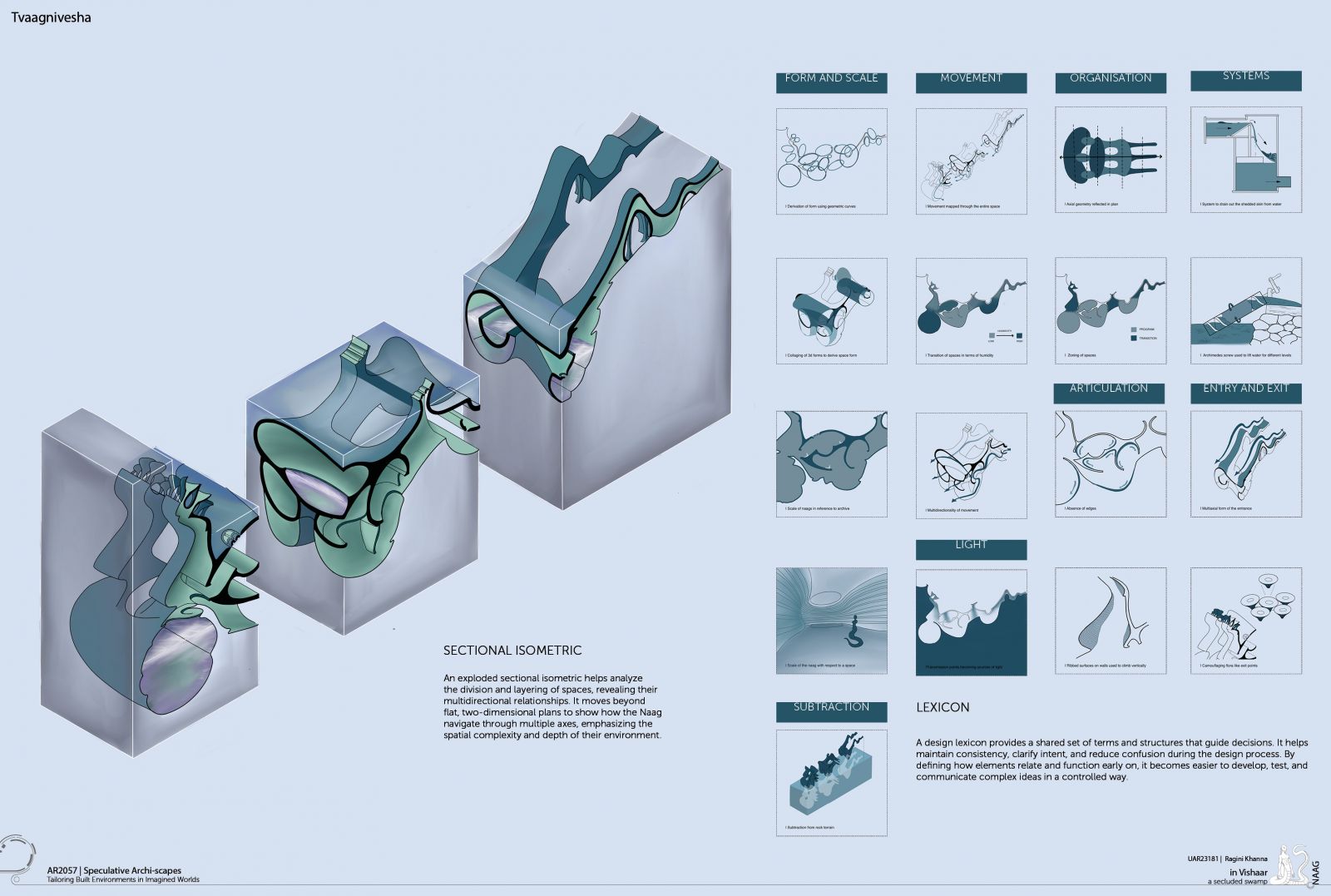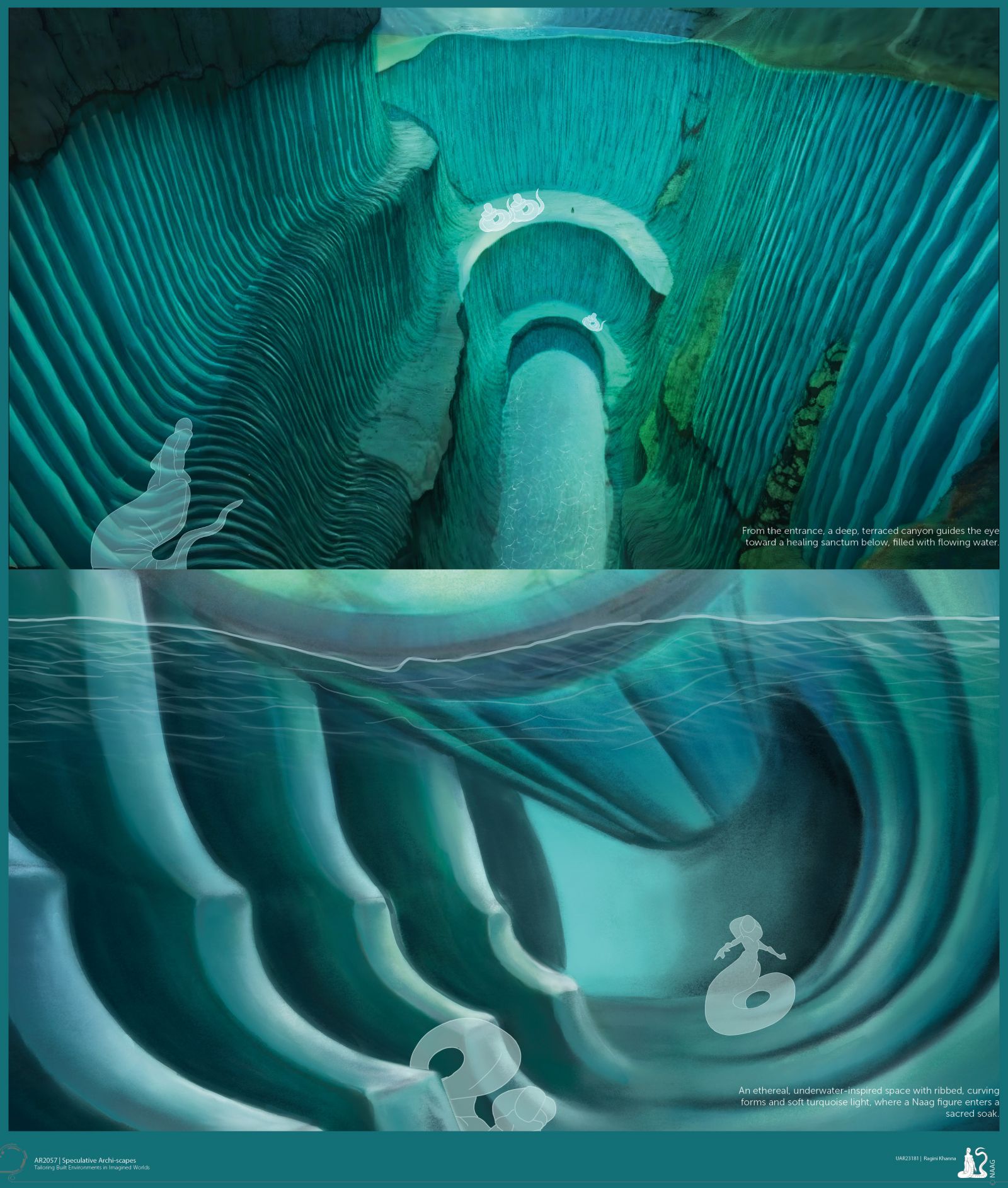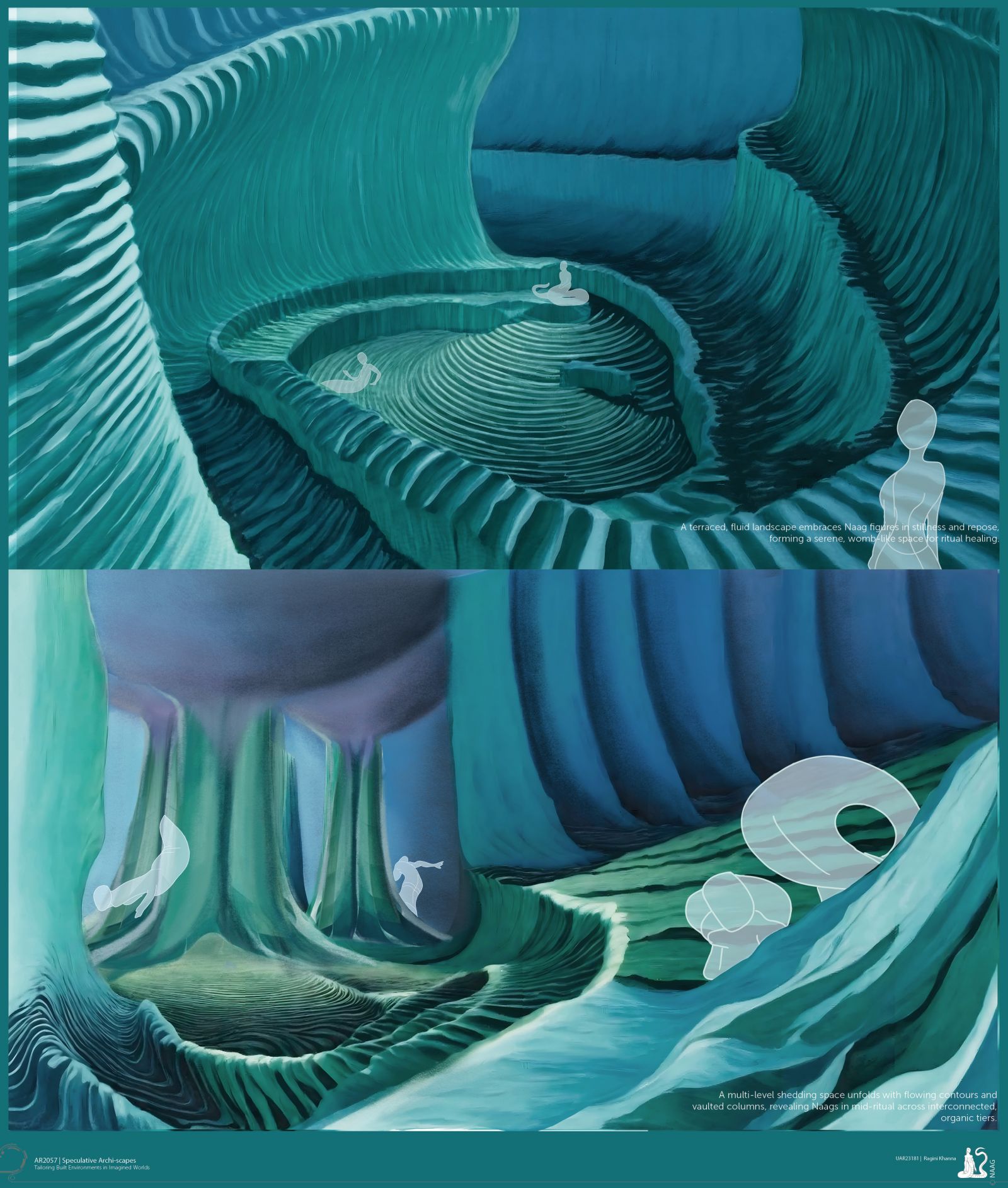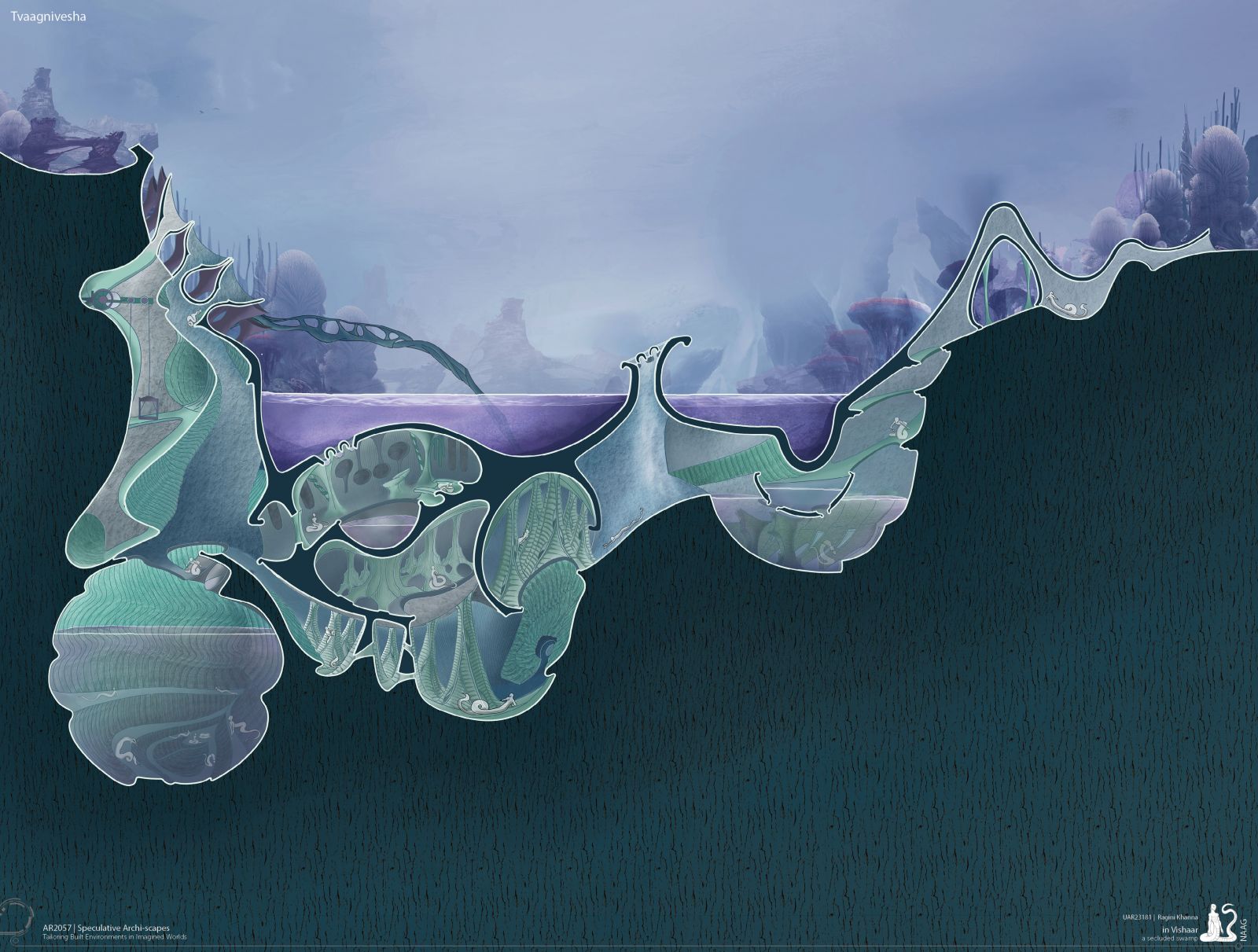Your browser is out-of-date!
For a richer surfing experience on our website, please update your browser. Update my browser now!
For a richer surfing experience on our website, please update your browser. Update my browser now!
The design draws directly from serpentine anatomy and the sacred Naag ritual of skin shedding. Curved enclosures mimic the sinuous form of a serpent in motion, while layered thresholds reflect stages of transformation. Moisture-retentive surfaces and dim, diffused light evoke the subterranean stillness required for shedding. The spatial rhythm guides the Naag through contraction, release, and renewal. This journey culminates in the central chamber, where shed skin is ritually preserved. The name Tvaagnivesha—a union of tvak (skin) and nivesha (dwelling or immersion)—encapsulates this design philosophy: a sanctum for shedding identity and embodying rebirth.
View Additional Work
